What to Eat in Europe as a Vegan and Vegetarian
Veganism has grown exponentially in recent years, and it has become easier than ever to find vegan food options in many parts of the world. Europe is no exception, and the continent is home to a diverse range of vegan dishes that are worth trying.
In this blog post, we will explore some of the most delicious vegan and vegetarian meals that European cities have to offer. From savory mains to sweet treats, there is something for everyone on this list.
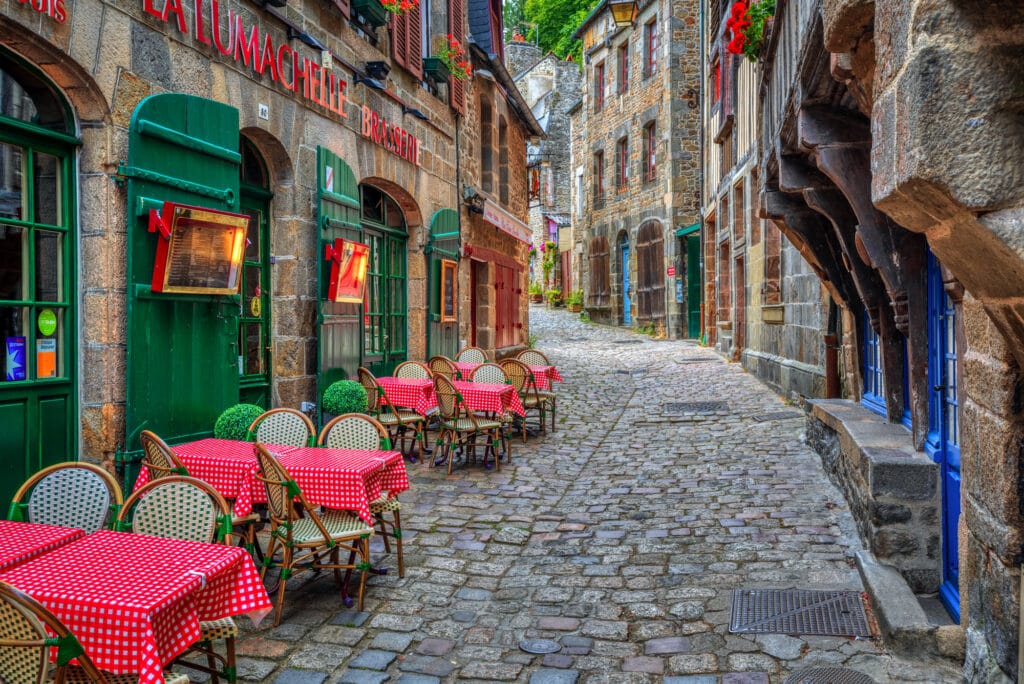
Vegan and Vegetarian in Europe
It might surprise you that vegetarianism and veganism are very common across Europe and probably more popular here than in the USA. After all most local cuisine is created from vegetables and fruits that are grown locally and easy to obtain. Europe is the fastest-growing vegan market in the world. In 2020, the vegan food market in Europe was valued at €3.6 billion, and it is expected to reach €7.5 billion by 2025. The number of vegans in Europe also increased by 100% in the past five years.
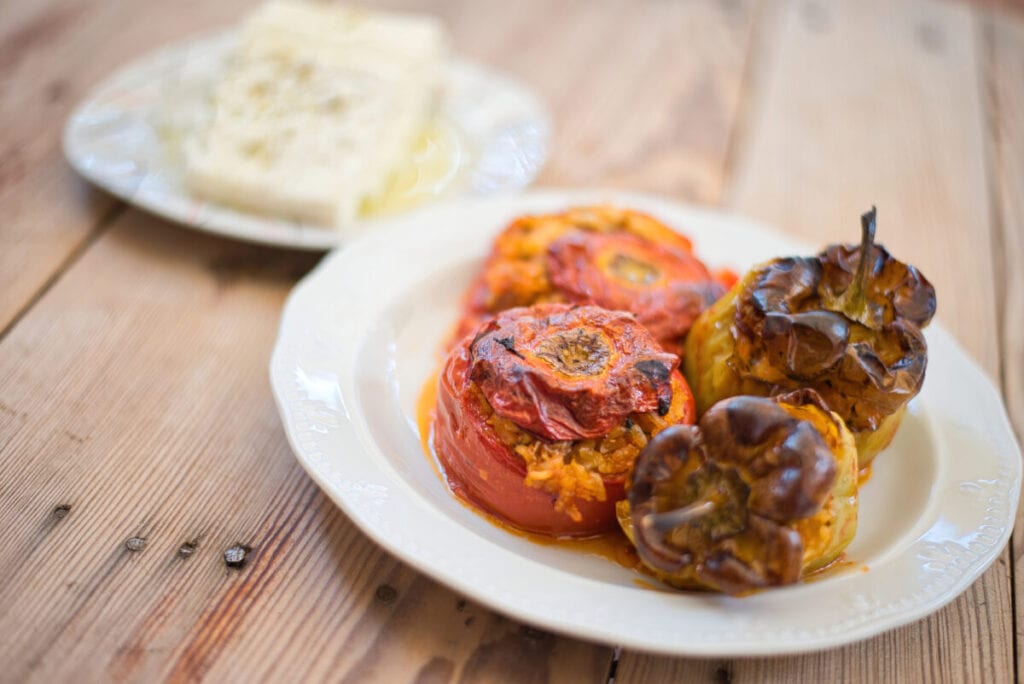
The growth of veganism and vegetarianism in Europe can be attributed to several factors. First, there is an increasing awareness of the environmental impact of animal agriculture. Studies have shown that animal agriculture is a significant contributor to greenhouse gas emissions, deforestation, and water pollution. Second, there is a growing concern for animal welfare. Many people are now aware of the cruelty involved in animal agriculture and are choosing to avoid animal products for ethical reasons. Finally, there is a growing body of research showing that a plant-based diet is healthier than a diet that includes animal products.
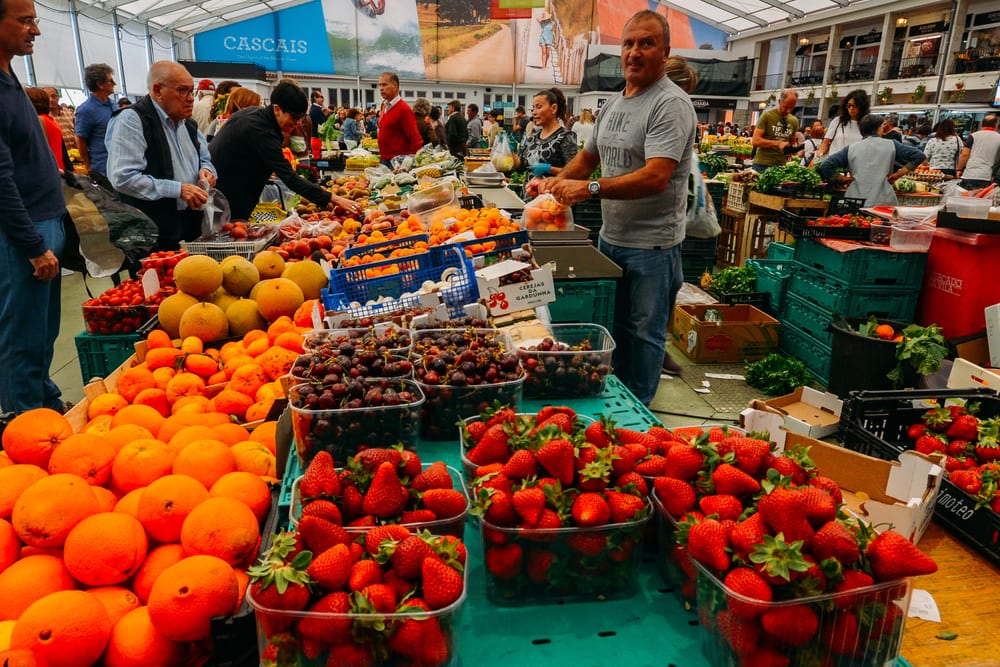
What is a Vegan? A vegan will eat no animal products including items such as honey, eggs, dairy and any ingredient that comes from an animal such as the rennet in Cheese.
What is a Vegetarian? A person who does not eat meat or fish, and sometimes other animal products, especially for moral, religious, or health reasons.
- What to Eat in Europe as a Vegan and Vegetarian
- Vegan and Vegetarian in Europe
- 32 Vegan and Vegetarian dishes to try in Europe
- Placki Ziemniaczane – Potato Pancakes in Poland
- Mushroom Goulash in Hungary
- Vegan Pesto Pasta in Italy
- Vegan Shepherd's Pie: UK
- Dolmades, Koupepia: Greece, Cyprus
- Vegan Moussaka: Greece
- Falafel: Lebanon and the Balkans
- Veggie Curry
- Veggie Burger: Europe
- Pierogi: Poland
- Vegan Kebabs: Europe
- Conclusion
32 Vegan and Vegetarian dishes to try in Europe
With that in mind, here are our top picks of iconic European meals for vegans and vegetarians.
Placki Ziemniaczane – Potato Pancakes in Poland
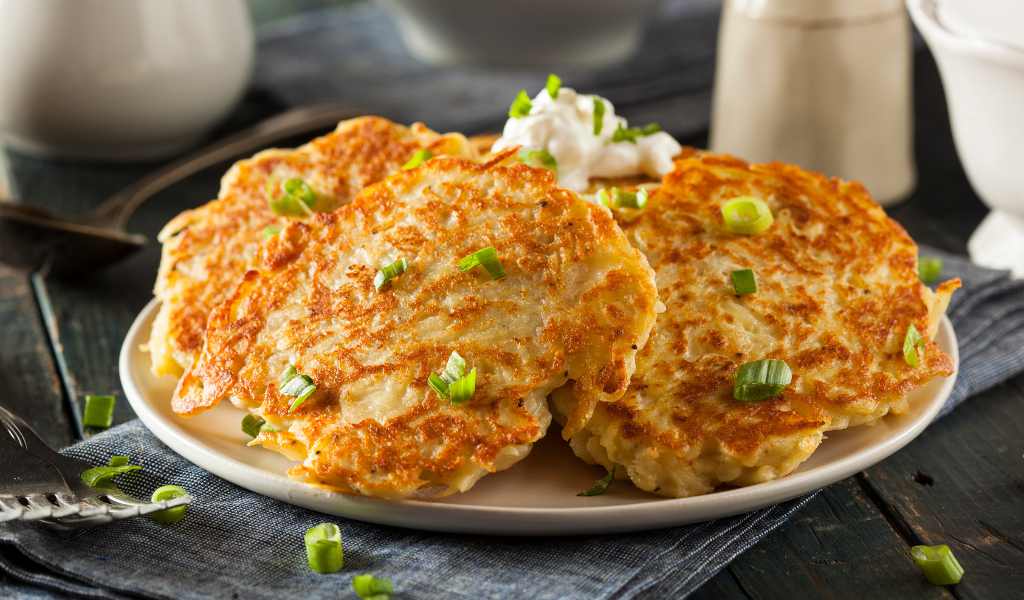
Potato pancakes, also known as placki ziemniaczane, are a traditional Polish dish made from grated potatoes, flour, and seasoning. They’re typically fried until crispy and served with a variety of toppings such as apple sauce, or mushroom sauce. While they’re not always vegan, they can easily be made without animal products. Some popular places to try potato pancakes in Poland include Pod Norenami in Krakow, Stary Dom in Gdansk, and Zapiecek in Warsaw.
Zhengyalov hats: Armenia
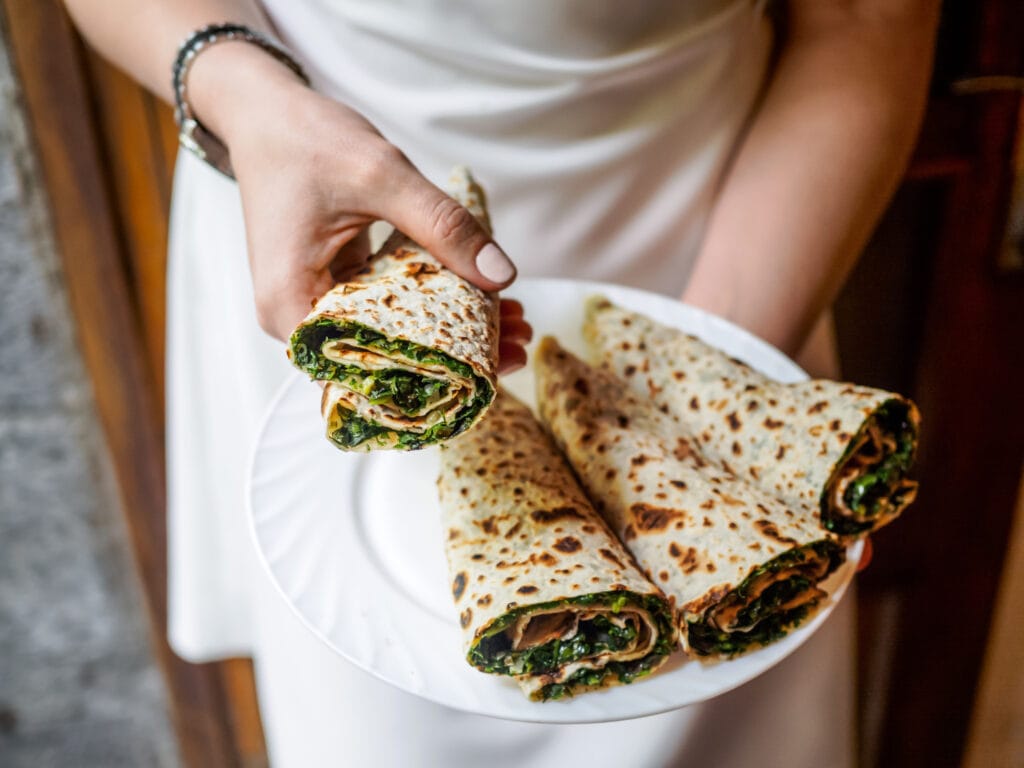
This literally means an Armenian flatbread stuffed with a variety of herbs. The herbs are layered onto a thin dough and then it is baked in a special pan. According to which baker you listen to the bread must be layered with 7, 8, 9, 20 or 27 fresh herbs each one has its own secret herb mixture.
Pelēkie zirņi ar speķi – Latvia
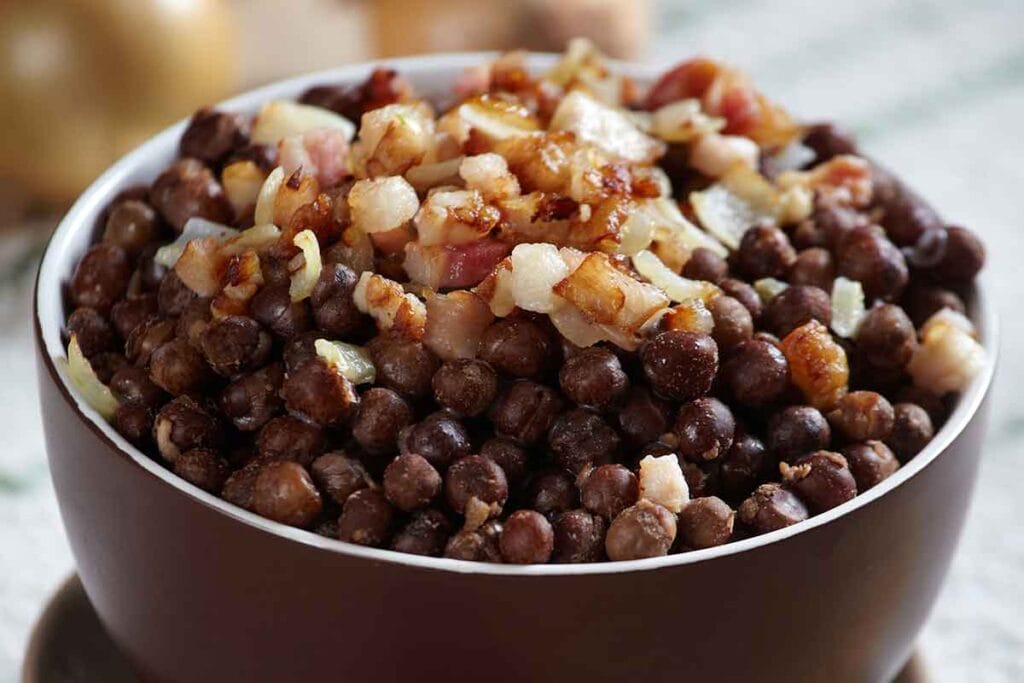
Pelēkie zirņi ar speķi is the national dish of Latvia. This type of stew is made with local grey peas (similar to chickpeas), fried onions, and diced speck. The peas are soaked overnight and then sautéed with bacon, salt, and pepper.
Harissa – Armenia’s National Dish
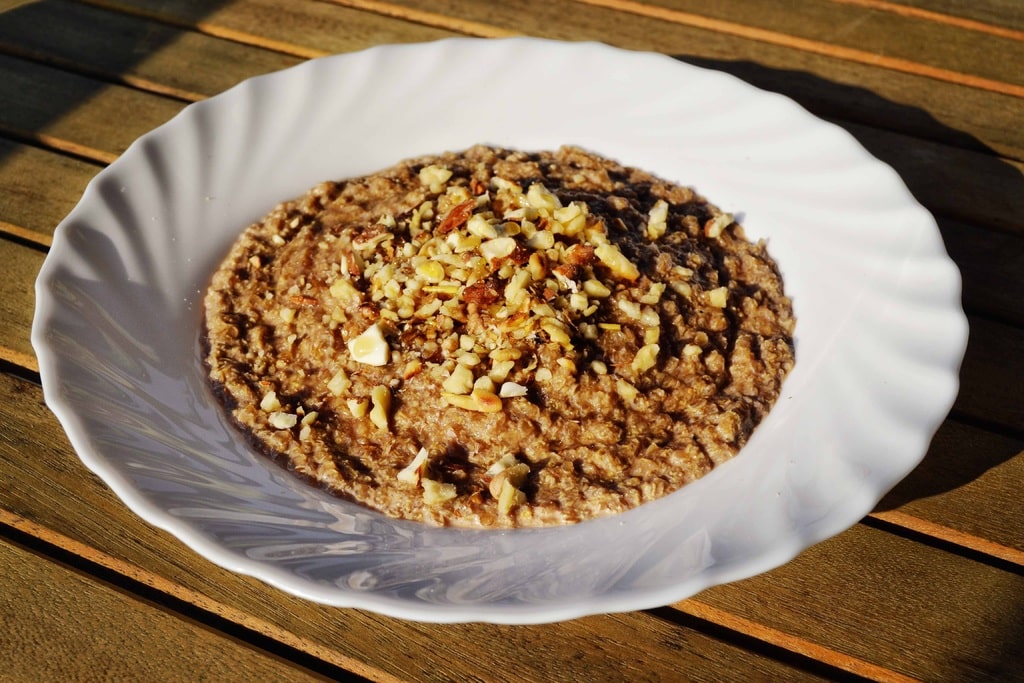
Armenian Harissa is not the same as the spice paste you may know. In Armenia, harissa is a sort of porridge that combines meat and is cooked for many hours. Harissa is considered the National Dish of Armenia.
Golabki – Cabbage Rolls in Poland
Or as we call them Cabbage rolls. Gołąbki is the Polish name for this dish that takes boiled cabbage leaves, and wraps them around a filling of minced pork or beef lightly seasoned with salt, pepper, garlic and onions with some white rice added. These are then baked and served with tomato sauce. I adore cabbage rolls I have eaten them around the world and with all kinds of variations but Polish recipe ones are my favourite. I even tried vegan cabbage rolls in Krakow at Pod Leliwa which had bulgur, lentils and a wheat berry filling that was out of this world.
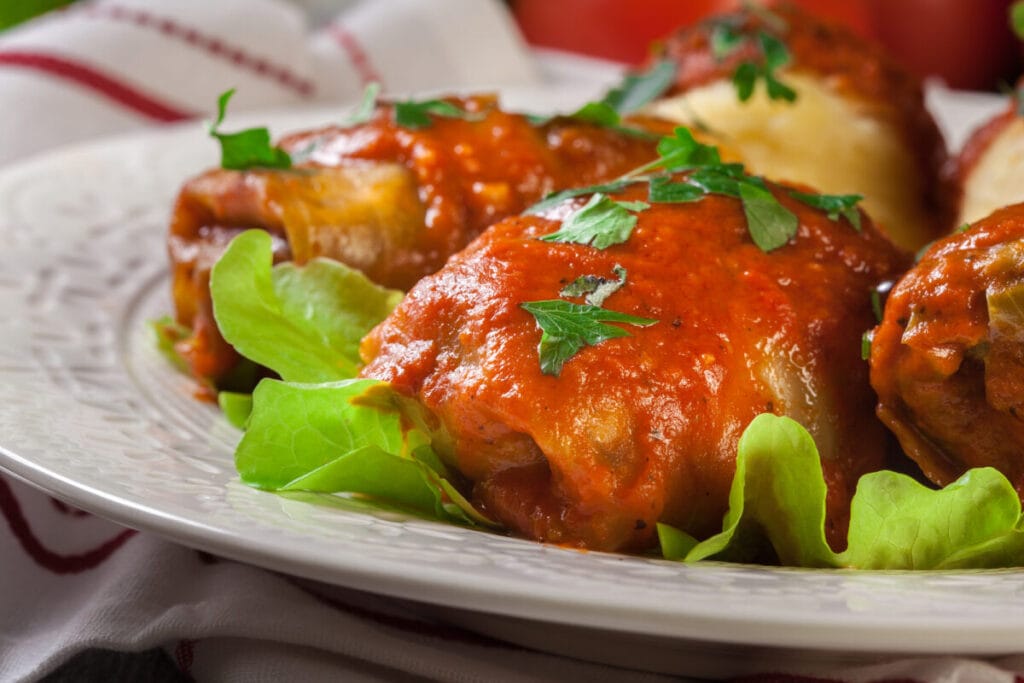
Mushroom Goulash in Hungary
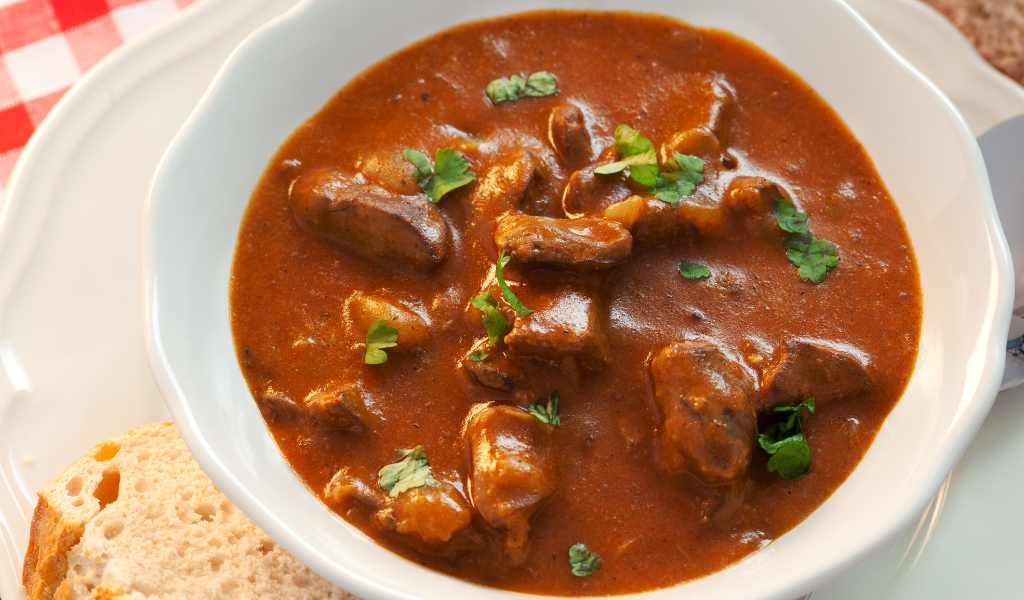
Goulash is a Hungarian stew that is traditionally made with beef or pork but can easily be made vegan by using mushrooms or other vegetables instead. It is a hearty dish that is perfect for a cold winter day, and it is usually served with crusty bread or potatoes.
Soparnik: Croatia
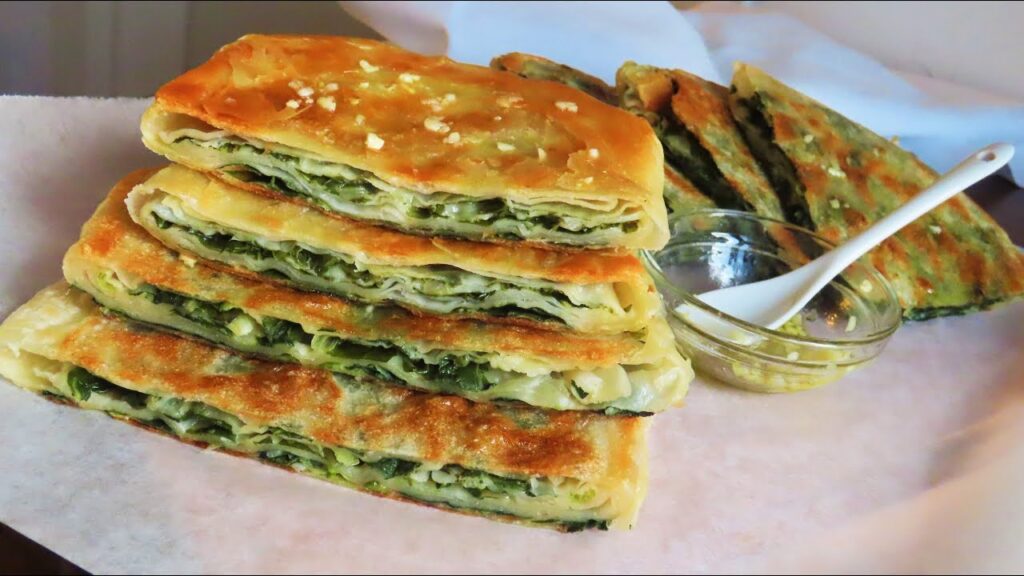
A very simple dish made from chard, onions and parsley with a simple dough. In 2016, the European Commission listed soparnik as a non-material national heritage of Croatia
Soparnik comes from the region of Poljica on the Dalmation coast near the town of Split and there is a festival at the end of July where families present their Soparniks to win the prize of the best in Poljica.
Dolma – stuffed vegetables: Bosnia
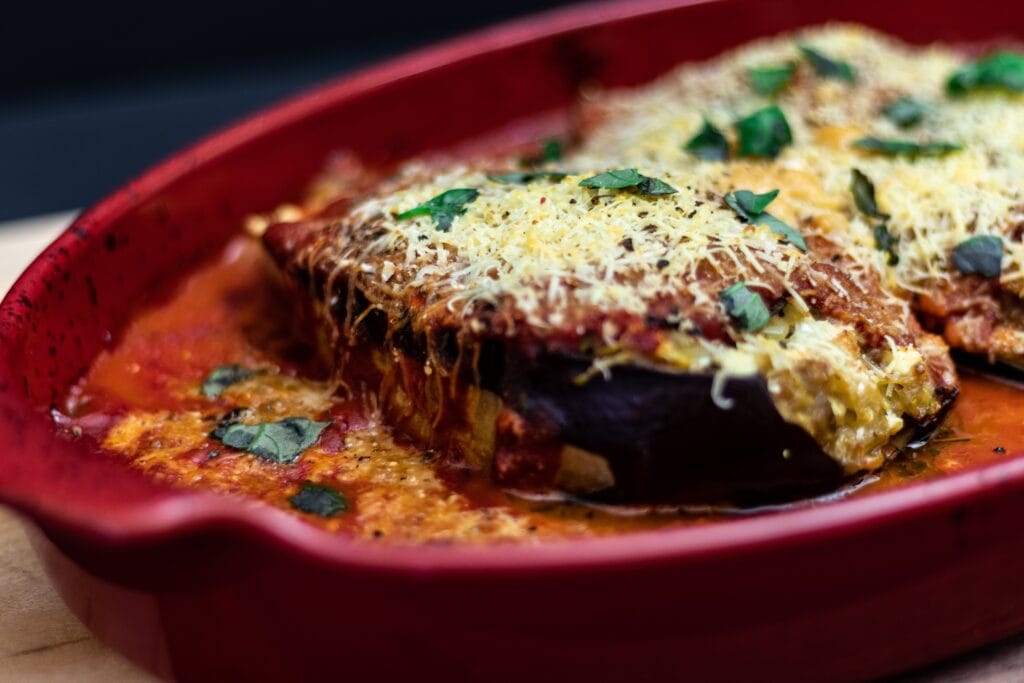
If you know dolma you know it’s a meat and rice-based stuffing inside a grape leaf. In Bosnia, the stuffing is put into zucchini, bell peppers, onions or eggplant. You can have either rice stuffed or meat stuffed and rice dolma is served with a garlic sauce and the meat-based is served with a lemon-based sauce.
Vegan Pesto Pasta in Italy
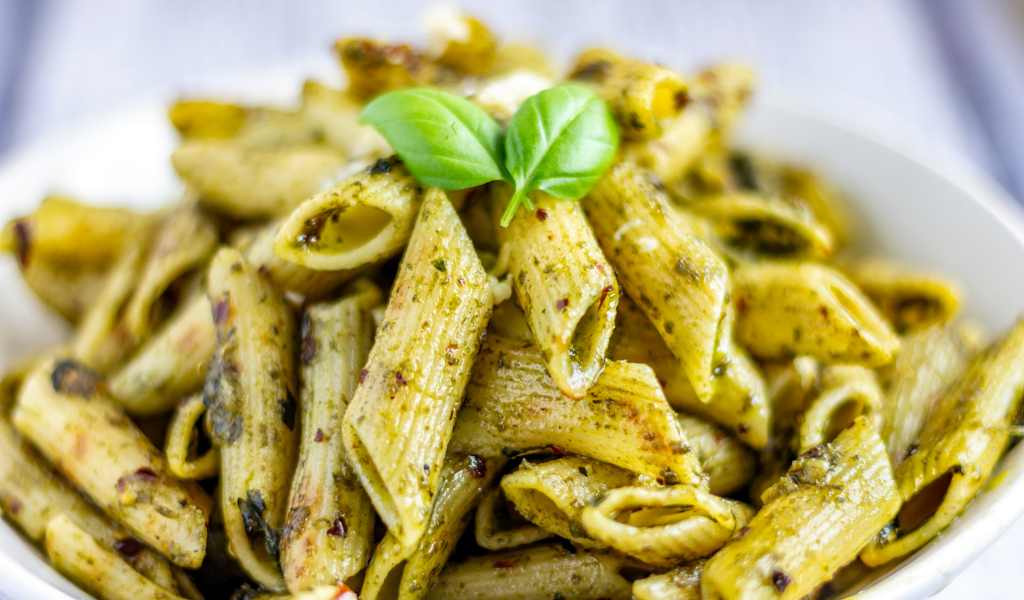
Pesto pasta is a classic Italian dish that is easy to make vegan. Simply swap out the traditional cheese with a vegan cheese alternative, and you have a delicious meal that can be made in under 30 minutes. The dish typically consists of pasta, pesto sauce (made with basil, garlic, pine nuts, and olive oil), and cherry tomatoes.
Black Rice Salad – Rome
Look for Vegetariano e Vegano a stall at Mercato Centrale Rome that does everything vegan and vegetarian from Bruschetta to Black Rice Salad, pizza and more.
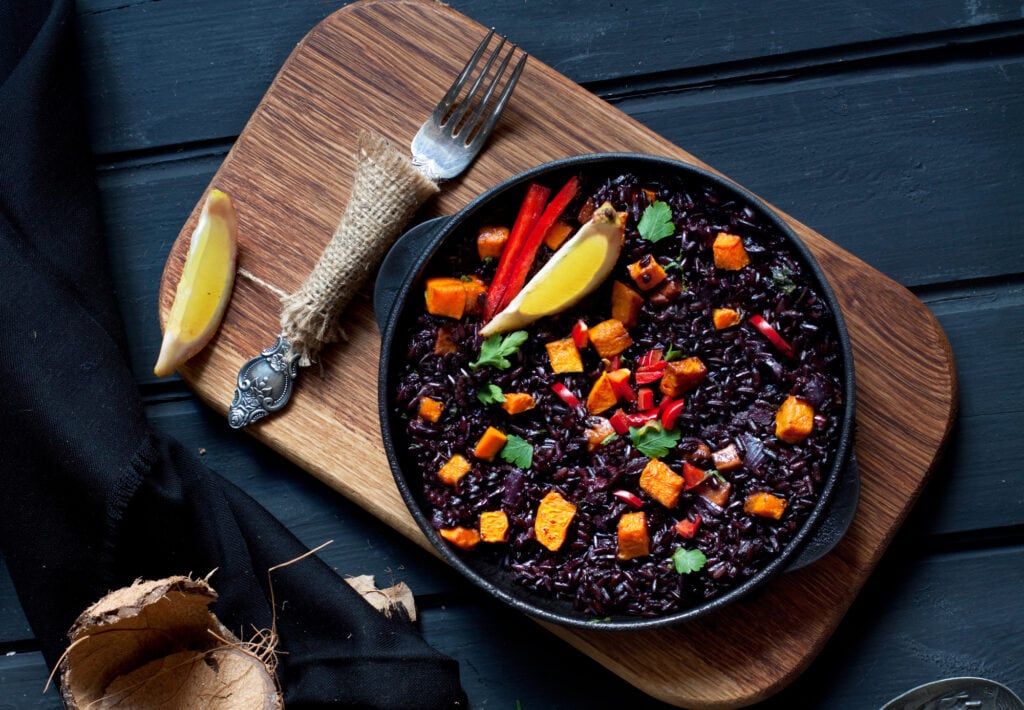
Spain: Gazpacho
Until I went to Spain the thought of cold soup that wasn’t dessert-like put me off trying it. But gazpacho is amazing, silky sweet tomatoes blended with bread and various herbs are so refreshing as to be addictive.

Paella is a Spanish dish that is typically made with seafood or meat but can be easily made vegan by using vegetable broth and omitting the meat. It is a flavorful rice dish that is seasoned with saffron and paprika and includes vegetables like tomatoes, onions, and bell peppers.
Tortilla de Patatas: Spain
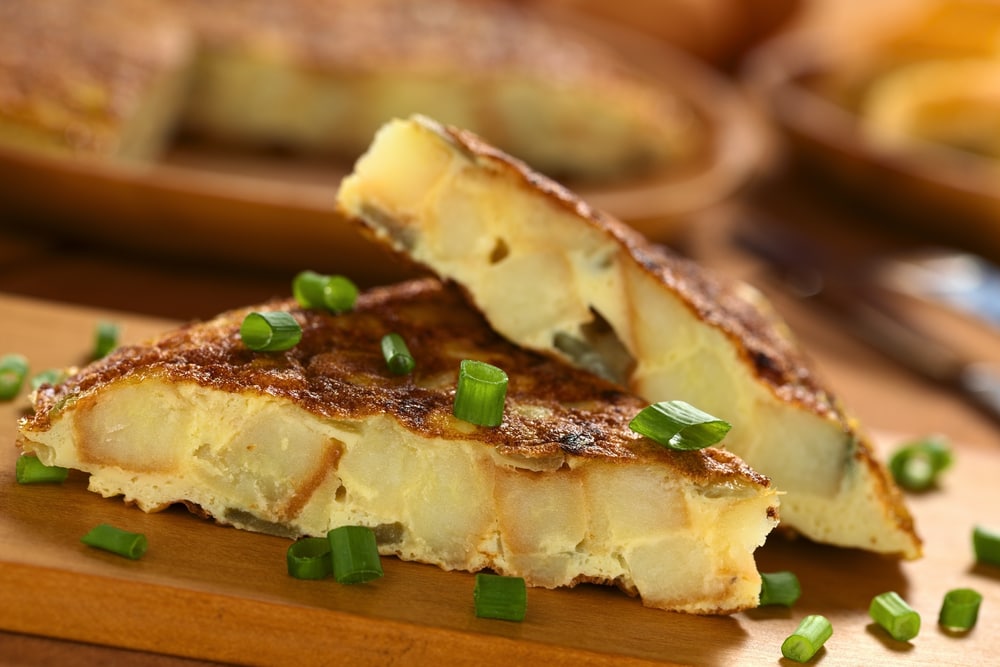
This is a kind of Spanish omelette or quiche and traditionally it is made from sliced potatoes that are sauteed with onions and then eggs are beaten and added. The omelette is sliced and served hot or cold a perfect vegetarian dish.
Tostada con Aceite y Tomate: Spain
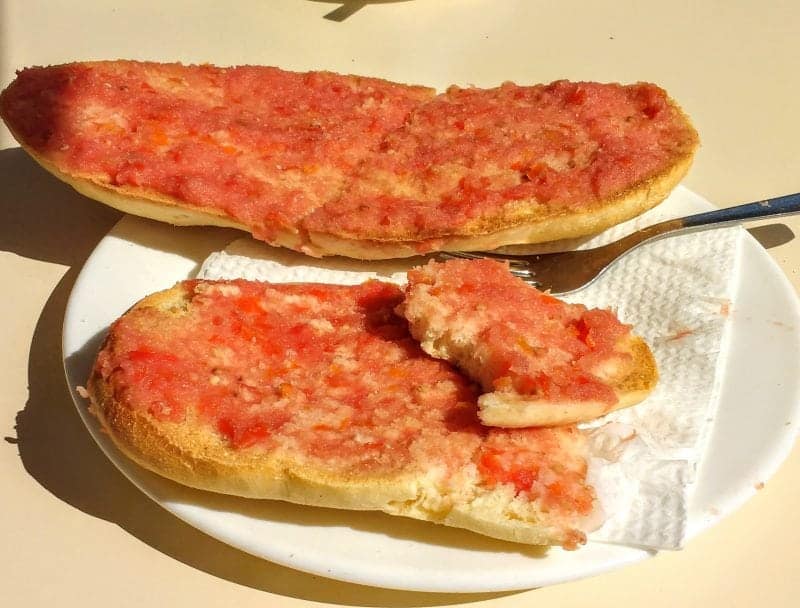
The perfect Vegan Breakfast. Andalucian cuisine calls for a very light breakfast. A tostada is simply a toasted bun or pitufo that has been drizzled with olive oil, the bun is then topped with pureed fresh tomato and if you want you can add queso (cheese) or Jamon (ham). You can order a media which is a half order or a full order. The pitufo is an oblong-shaped thin crusty roll that is around 7-8 inches in length.
Soppa tal-Armla: Malta – Widow’s Soup
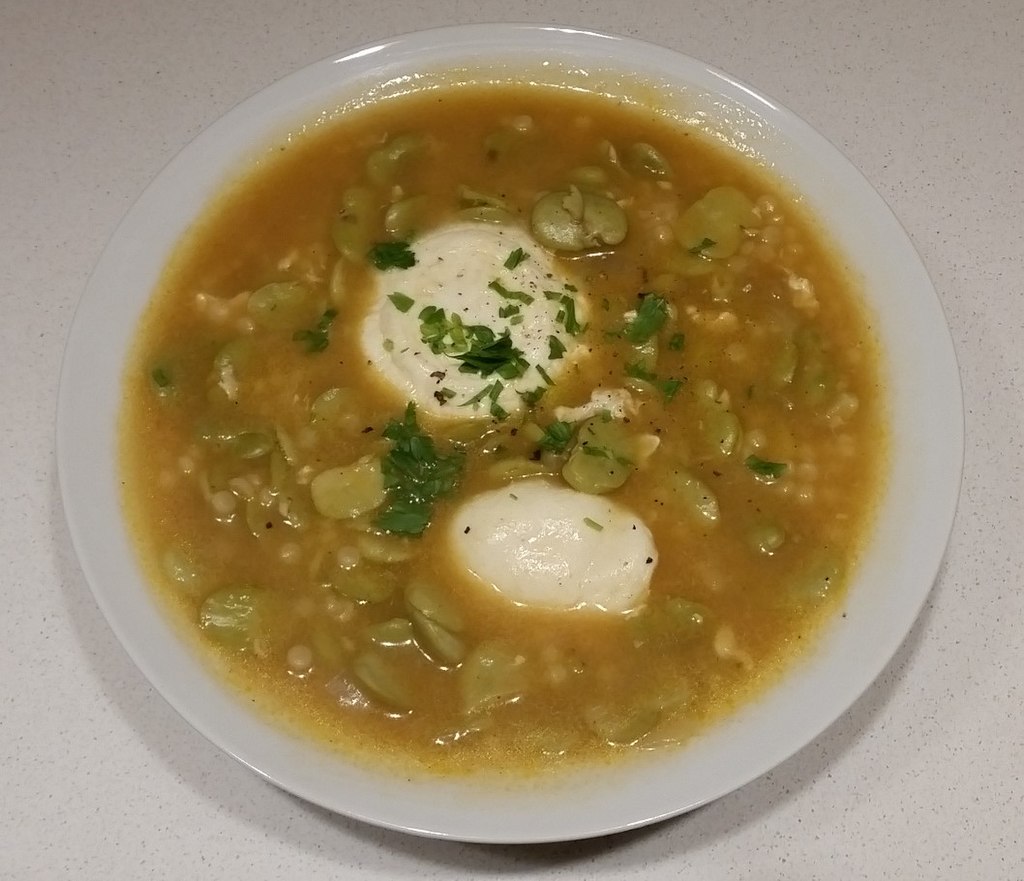
Soppa tal-Armla is a traditional Maltese dish dating back many years. During hard times such as WWII, this dish was the mainstay of many a Maltese diet. It consists of seasonal vegetables that can include peas, broad beans, potatoes, onions, carrots and any others that are available.
Vegan Shepherd’s Pie: UK
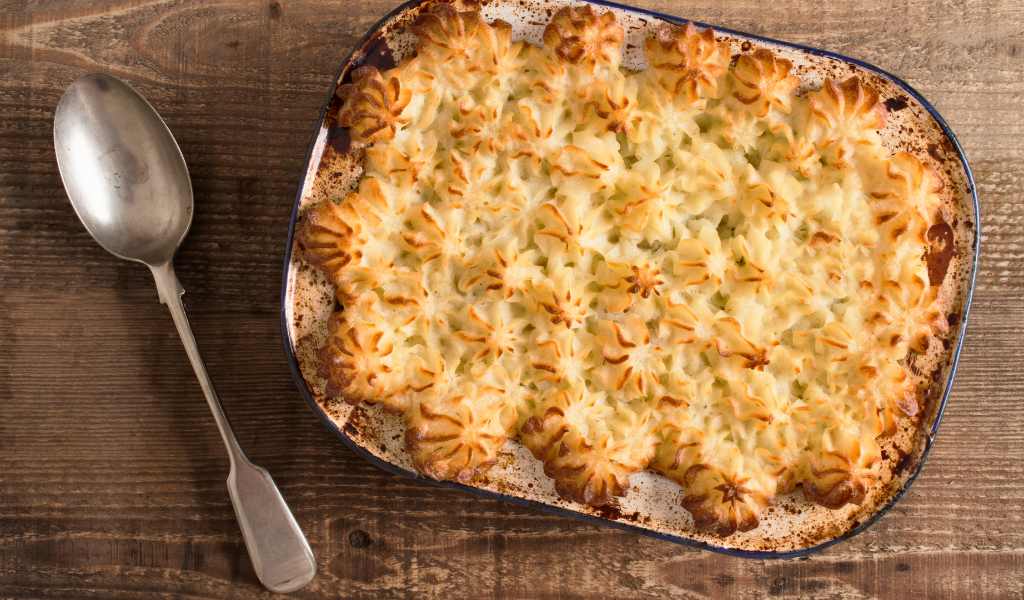
Shepherd’s pie is a traditional British dish that is typically made with lamb but can be easily made vegan by using lentils or other meat substitutes like Impossible or Beyond Meat. It is a comforting dish that consists of a layer of mashed potatoes on top of a layer of savory vegetables and a protein source.
Bigilla: Malta – Maltese Bean Paste
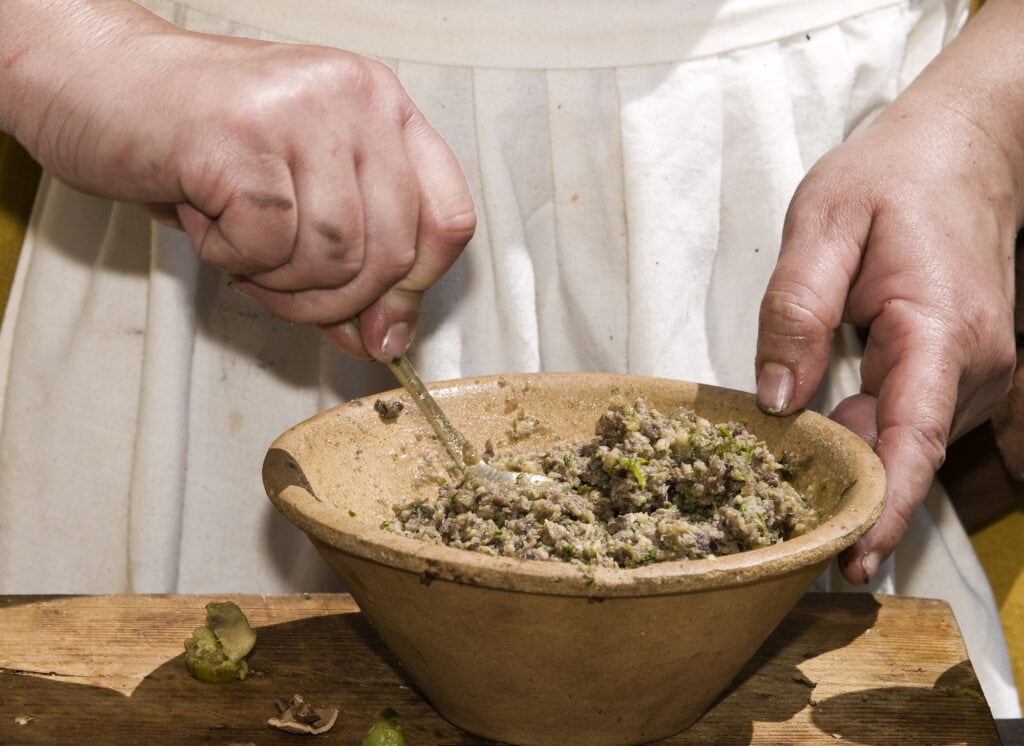
Bigilla is a Maltese pureed bean paste very much like hummus and served either as an appetizer or a condiment. It is broad beans that are mashed with parsley, garlic and other herbs like basil or mint and combined with olive oil.
France: Sea Salad
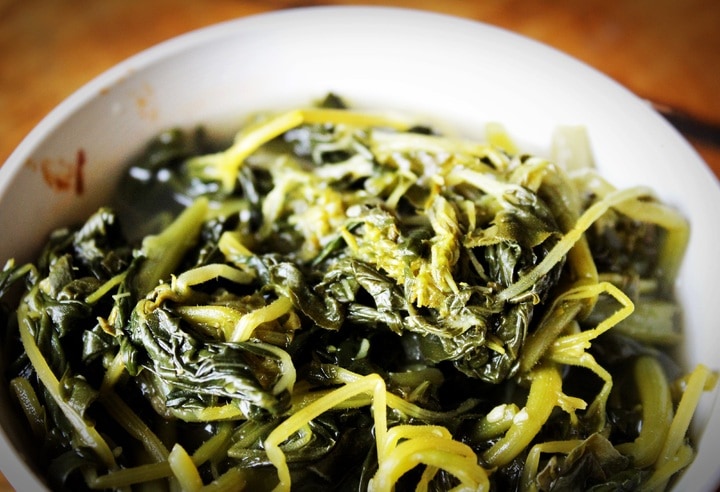
All coastal people have been eating seaweed for centuries and Brittany’s inhabitants have been no different. Seaweed is a growing star in many Chefs’ dishes and here in Brittany, you can find wakamé, spirulina, kombu royal, sea spaghetti, lithothamne and the widely used nori and dulse. In all, close to 800 different seaweeds are native to these waters – the richest diversity of such species in the world.
Panackelt: England
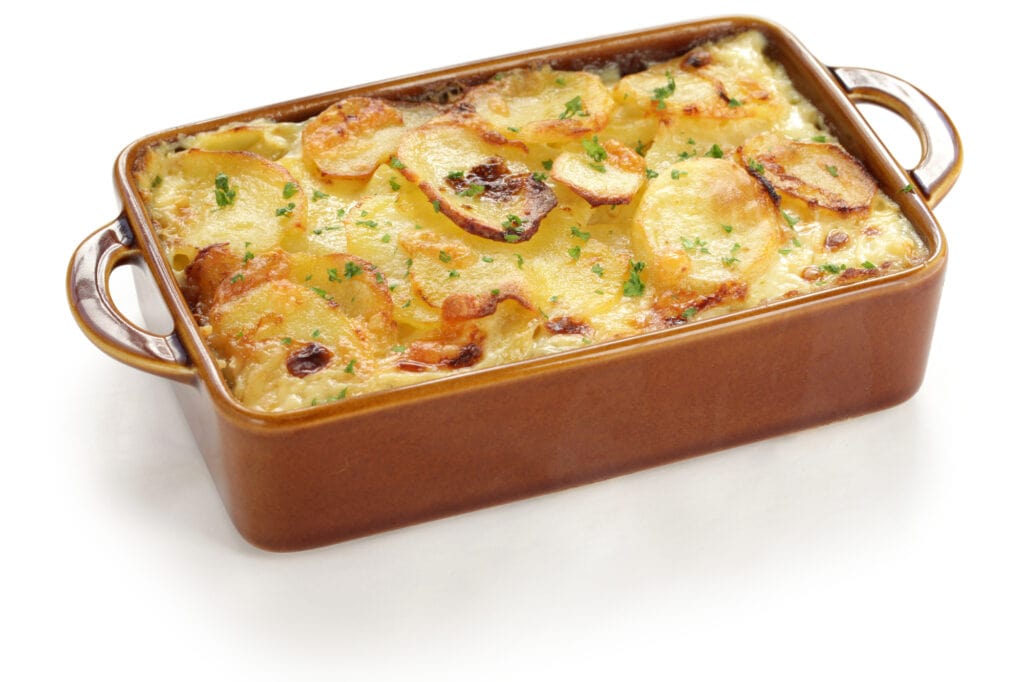
This is a slow-cooked casserole dish containing root vegetables like carrots, turnips, onions, parsnips and potatoes a true one-pot meal from the Northeast of England.
Fassolada – White Bean soup, Cyprus and Greece
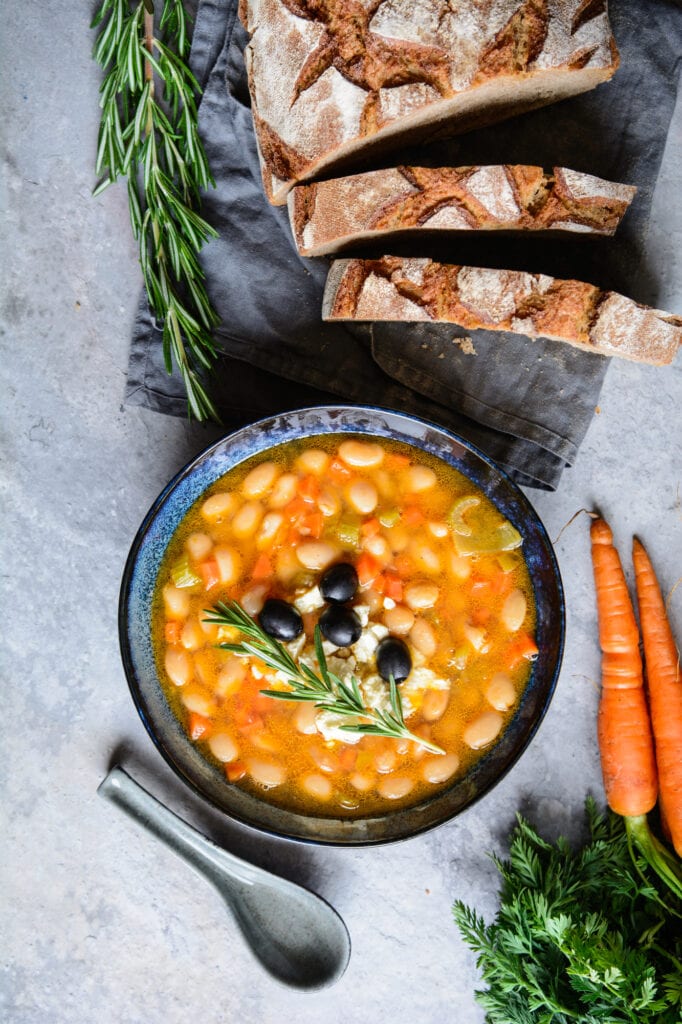
The national dish of Cyprus is fasolada a bean and vegetable soup, cooked and served with plenty of olive oil. Fasolada was originally from Greece; it was a traditional soup dedicated to the Greek God Apollo.
Dolmades, Koupepia: Greece, Cyprus
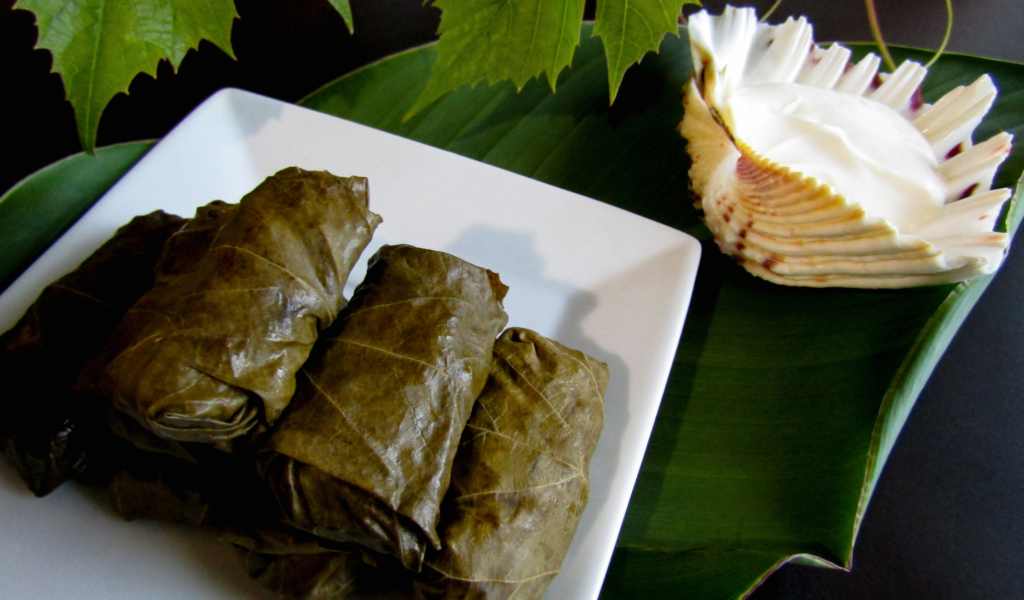
Stuffed grape leaves, also known as dolmas, are a popular dish in Mediterranean cuisine. They are made by filling grape leaves with a mixture of rice, herbs, and spices, and then steaming or baking them until they are tender. They can be served as an appetizer or a main course and are often accompanied by a dip. You will find dolmas in Greek Cuisine, and Cypriot menus alongside many other Mediterranean dishes.
Hummus: Cyprus, Greece, Mediterranean and the Middle East
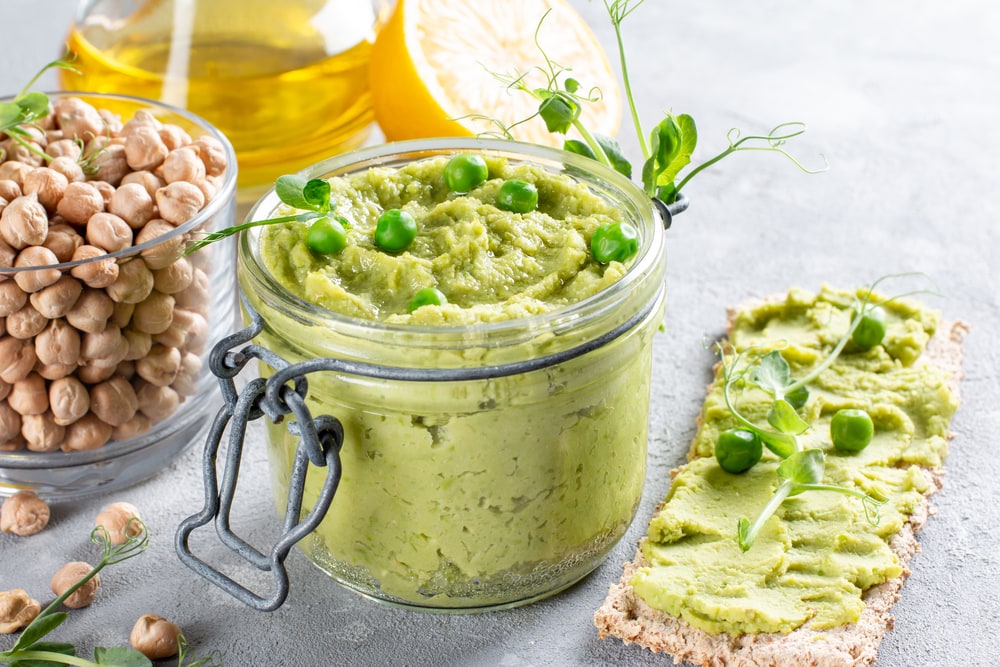
Hummus is created from chickpeas, olive oil, garlic, tahini, pepper and salt. These days you can find many versions with other ingredients such as cumin and honey, roasted red peppers, roasted garlic and lemon. The permutations are endless.
Vegan Moussaka: Greece
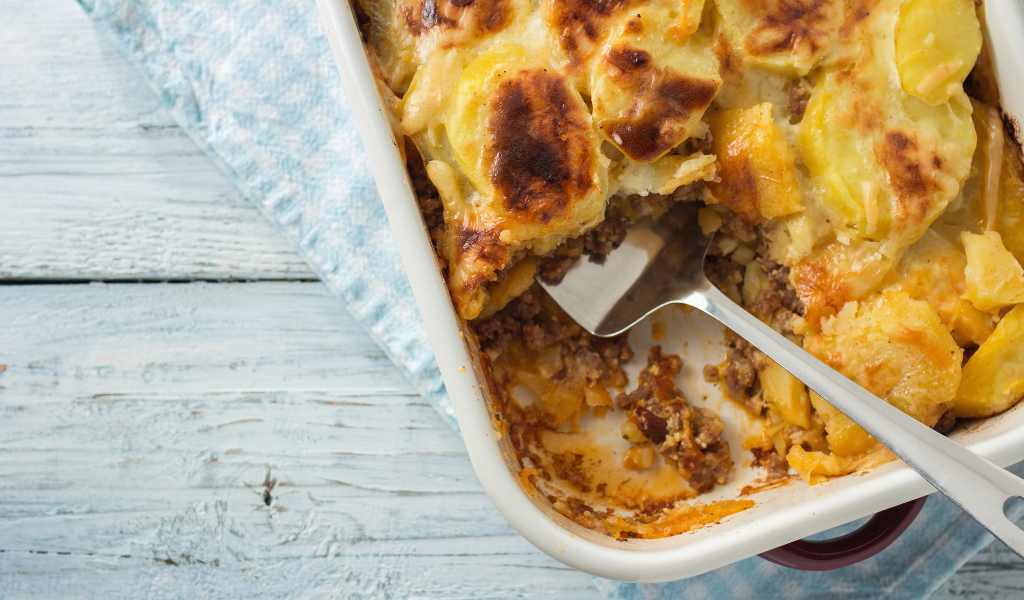
Moussaka is a Greek dish that is typically made with ground beef or lamb but can be easily made vegan by using lentils or other plant-based proteins. It is a layered dish that includes eggplant, potatoes, and a tomato-based sauce, and is often topped with a creamy bechamel sauce.
Marathopites: Fennel pie: Greece
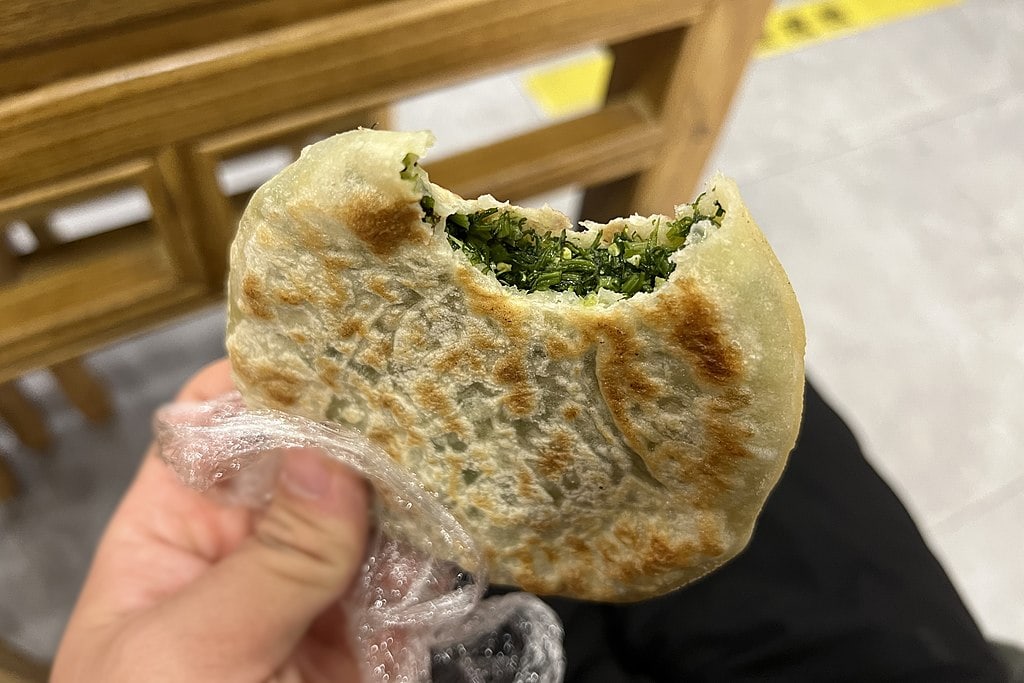
A speciality of Crete is a simple pie filled with fennel, onions and seasonal wild greens (horta) in a fragrant mix of herbs, stuffed in pastry dough and then fried in olive oil until golden.
Ntomatokeftedes: Tomato fritters
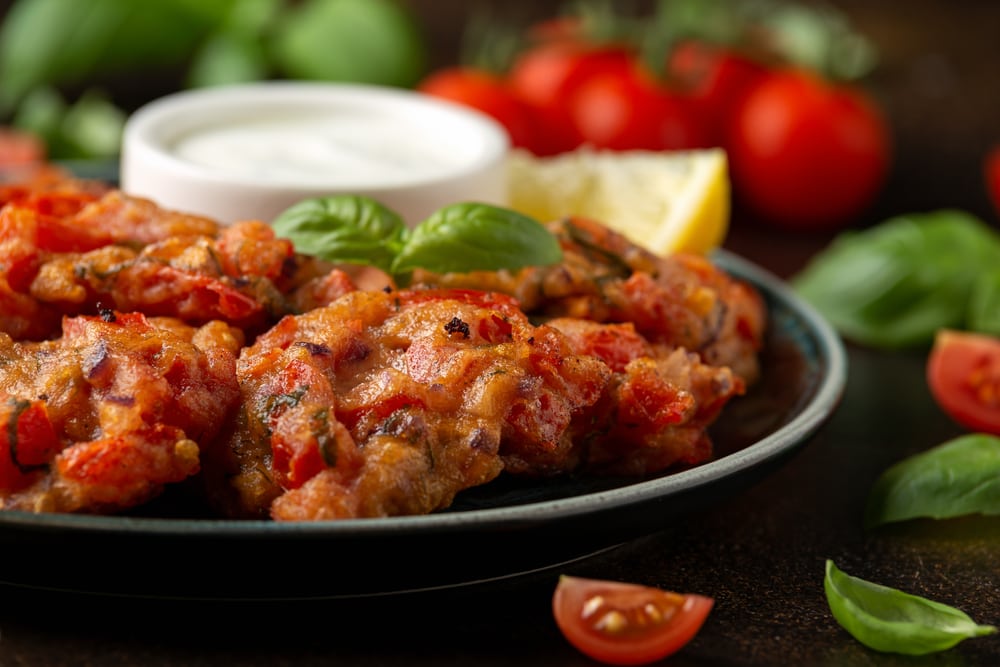
Santorini is famous for its Ntomatokeftedes, a crispy tasty tomato fritter made with the cherry tomatoes that grow there.
Keftedes in Greek means meatballs which are a Greek staple however in areas where meat is hard to come by they are made with a wide variety of vegetables, beans or pulses and herbs. The ntomatokeftedes in Santorini are made with cherry tomatoes, onion, pepper, mint, and oregano and deep fried.
Ful Mdammas: Lebanon
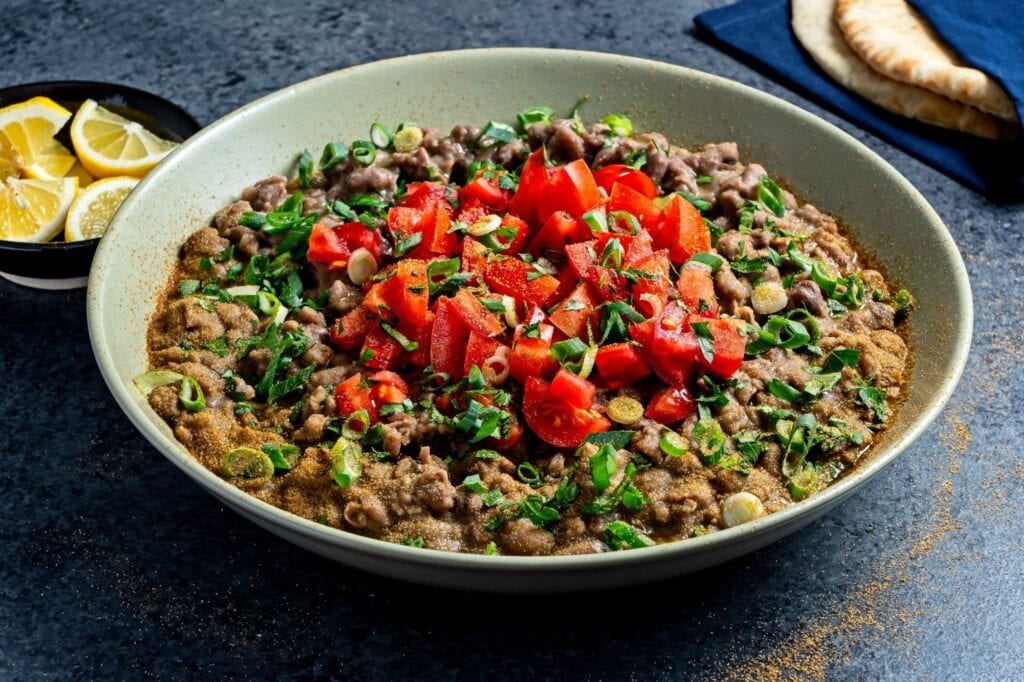
Foul mdammas and balila are considered the main Lebanese breakfast dishes. Foul uses fava beans mixed with cumin, lemon juice, garlic and olive oil. It is traditionally eaten with pita bread and the condiments include mint, radish, cucumbers and tomatoes.
Tabbouleh
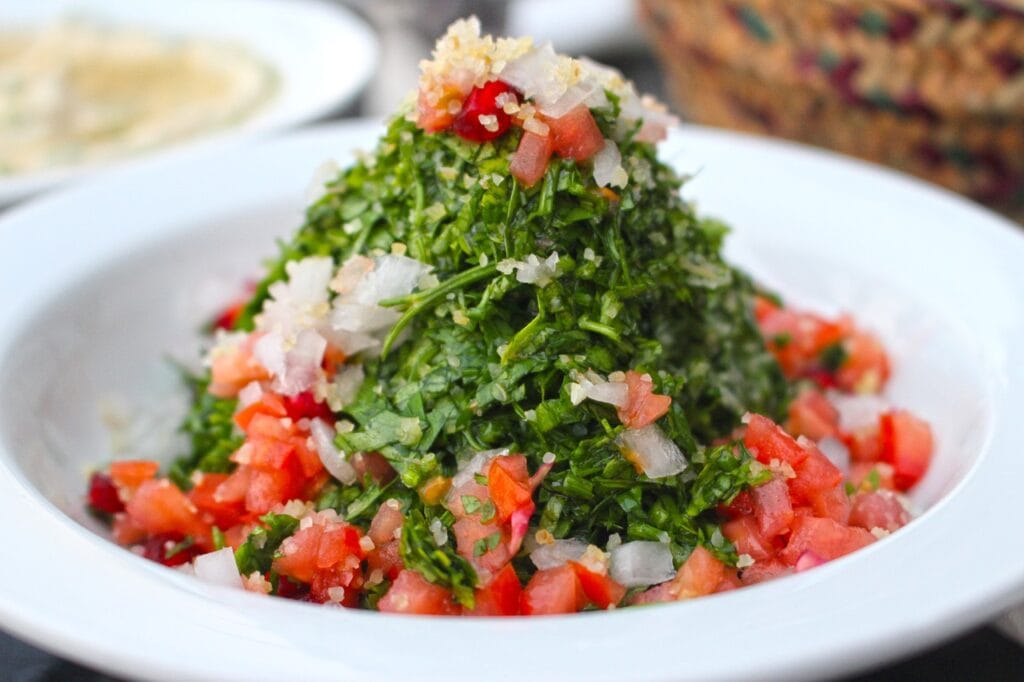
Tabbouleh’s main ingredient is cracked wheat or bulgar which is mixed with loads of parsley and finely chopped tomatoes and onions and a lemon and olive oil dressing.
Falafel: Lebanon and the Balkans
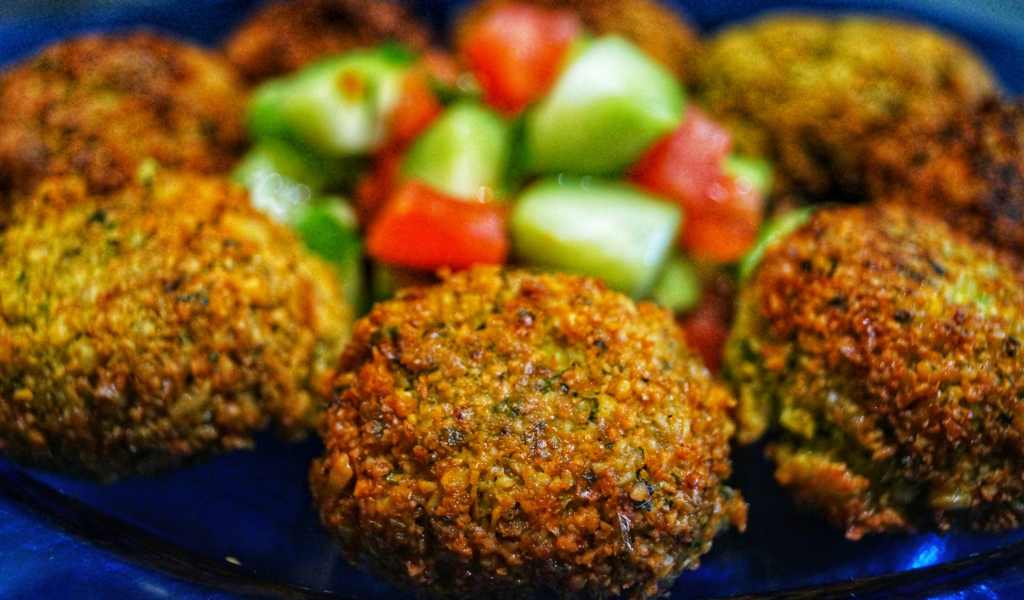
While Falafel did not originate from Europe, the Middle Eastern staple has become increasingly popular all over the continent – particularly in the Balkans. It is made from chickpeas that have been ground into a paste, mixed with herbs and spices, and formed into small balls or patties. These are then deep-fried until they are crispy on the outside and soft on the inside. Falafel is typically served on pita bread with hummus, tahini, and fresh vegetables.
Nobody can resist falafel and the Lebanese make some of the best. It is a vegan meatball made from chickpeas and sometimes mixed with fava beans and ground with cumin, lots of parsley and mint.
Tamiya: Egypt
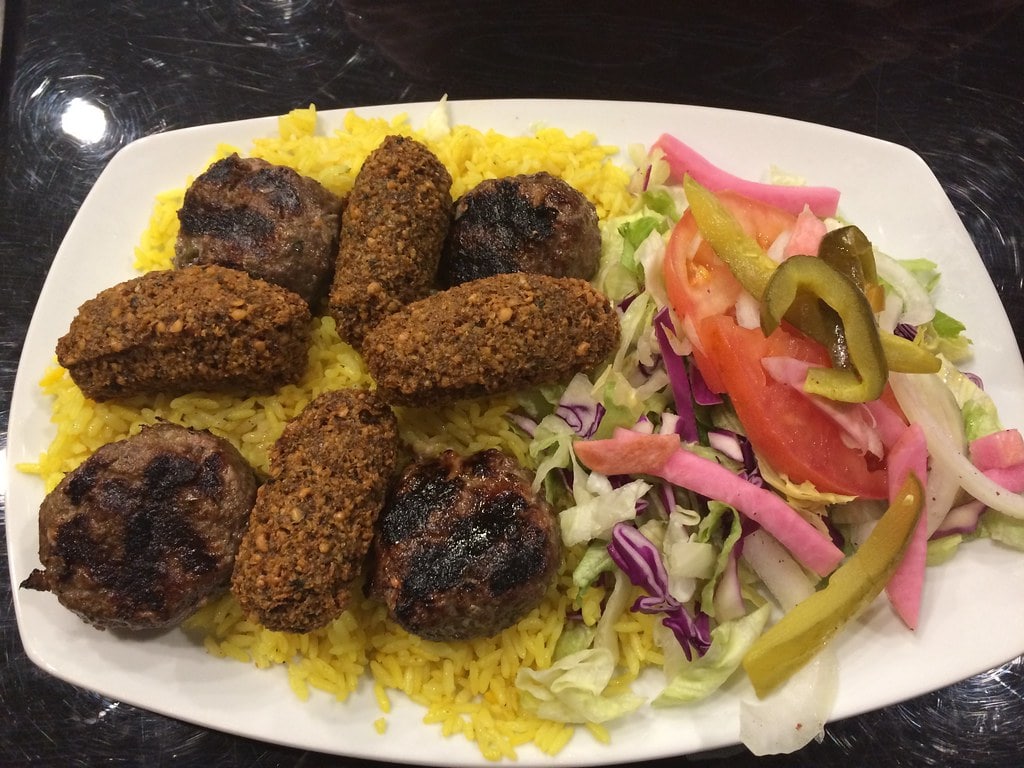
The most popular food in Egypt is Tamiya which is considered the National Food of Egypt and although similar to Falafel it is made with mashed fava beans instead of chickpeas.
The beans are ground and seasoned with a mix of fresh cilantro, parsley, white onion, garlic and leek, along with spices including cumin, cayenne, paprika, salt and pepper and coriander.
Like koshari and ful medames, it’s one of the most well-known traditional Egyptian dishes, so much so that you can even order a McFalafel at McDonald’s across Egypt.
Veggie Curry
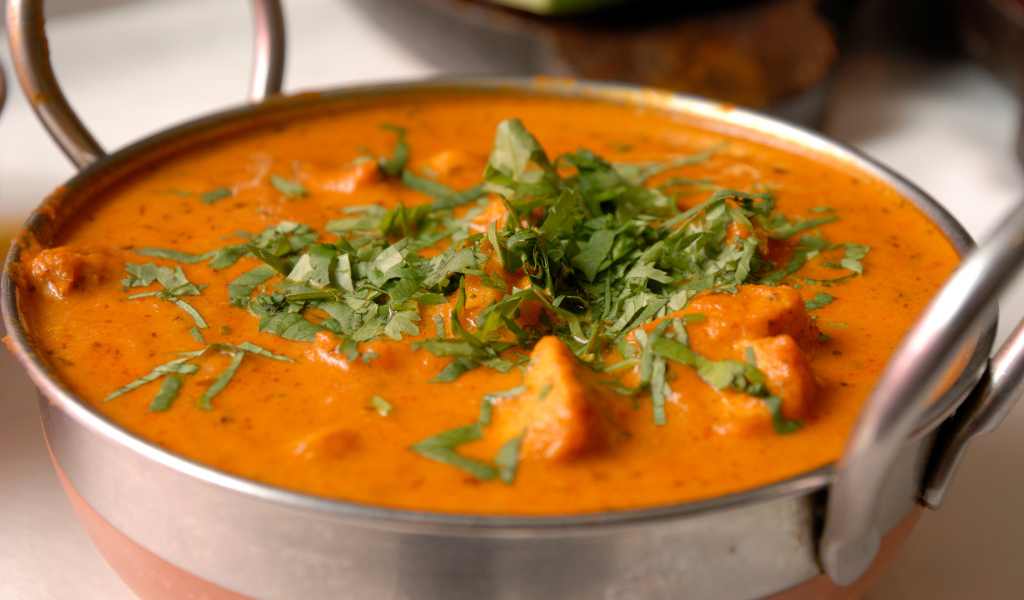
Curry is a popular dish in the UK, and all over Europe and most Indian restaurants offer vegan options. Look for vegetable curries made with coconut milk, spices, and plenty of vegetables like cauliflower, spinach, and eggplant. And of course, don’t forget the naan bread and rice to soak up all the delicious flavours.
Veggie Burger: Europe
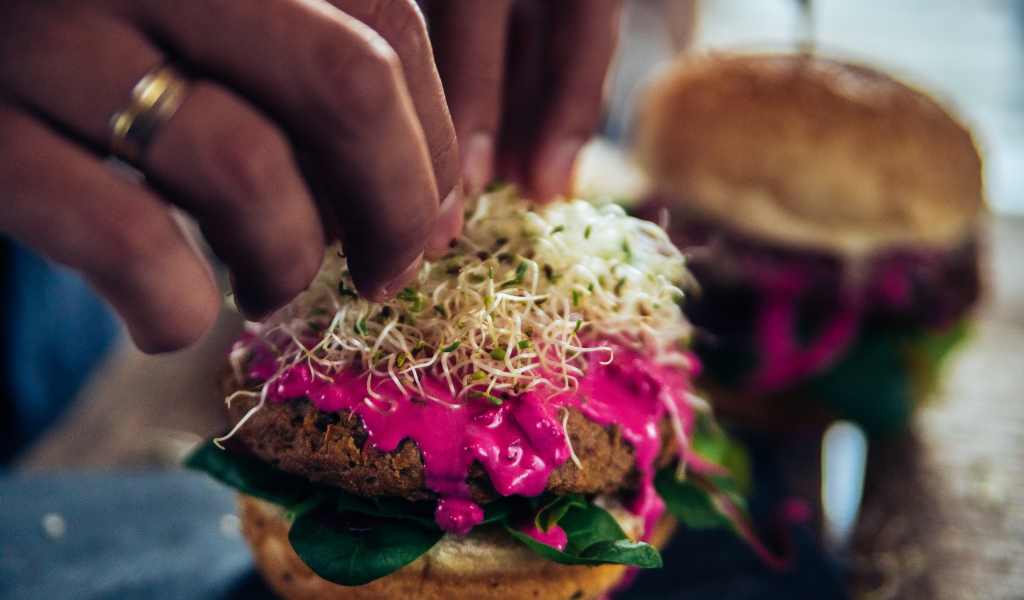
Veggie burgers can be found all over Europe these days and while Germany may be known for its meat-heavy dishes like sausages and schnitzel, the country is also home to some delicious vegan burgers. Many restaurants offer a veggie burger made with a plant-based patty, topped with lettuce, tomato, onion, and vegan cheese. For a unique twist, try a burger made with a beetroot or falafel patty.
Pierogi: Poland
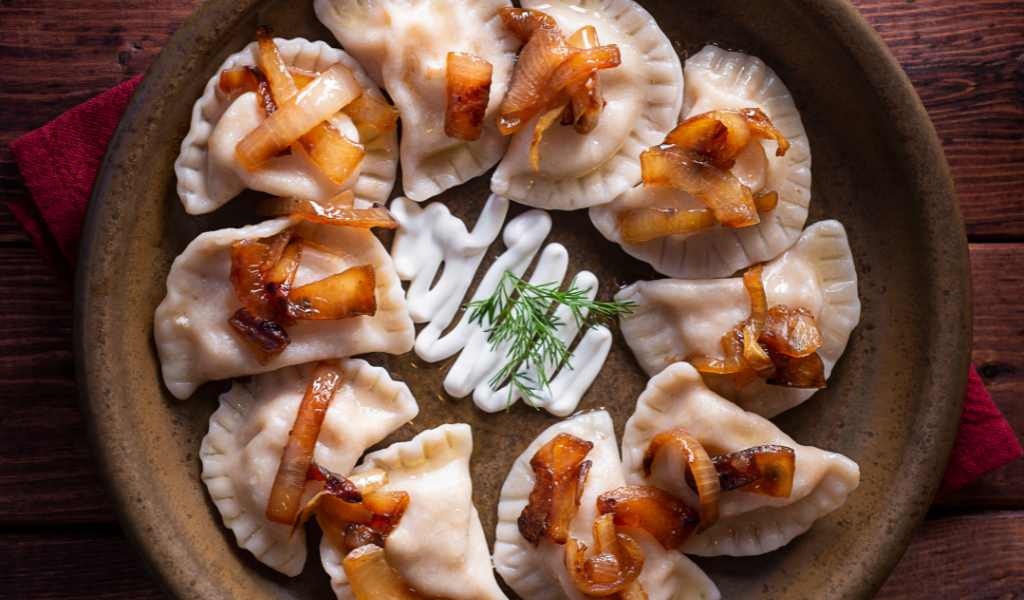
Pierogi, a type of dumpling typically filled with potatoes, sauerkraut, or mushrooms, is a traditional Polish dish that can easily be made vegan. Pierogi are usually served boiled or fried, and topped with onions and a dollop of sour cream (skip or serve with vegan sour cream to veganize). Look for vegan pierogi options at traditional Polish restaurants or street food stalls.
Vegan Kebabs: Europe
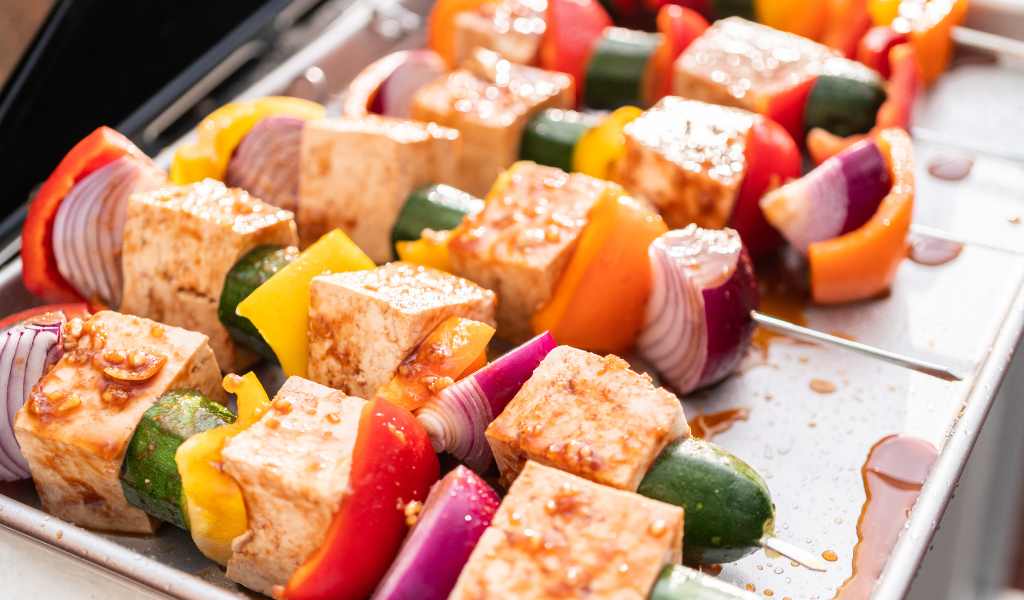
Turkey is another country that may not be part of Europe geographically, but its delicious vegan kebabs are definitely worth a mention. Look for a doner kebab made with seitan or tofu instead of meat, and filled with vegetables like lettuce, tomato, and cucumber. And don’t forget to add some hummus and tabbouleh on the side.
Conclusion
Whether you’re a vegan traveller or a local looking for delicious plant-based options, Europe has plenty of tasty meals to offer. From traditional dishes to modern twists, these vegan meals are sure to satisfy your taste buds and leave you feeling full and satisfied.
Pin it to save it
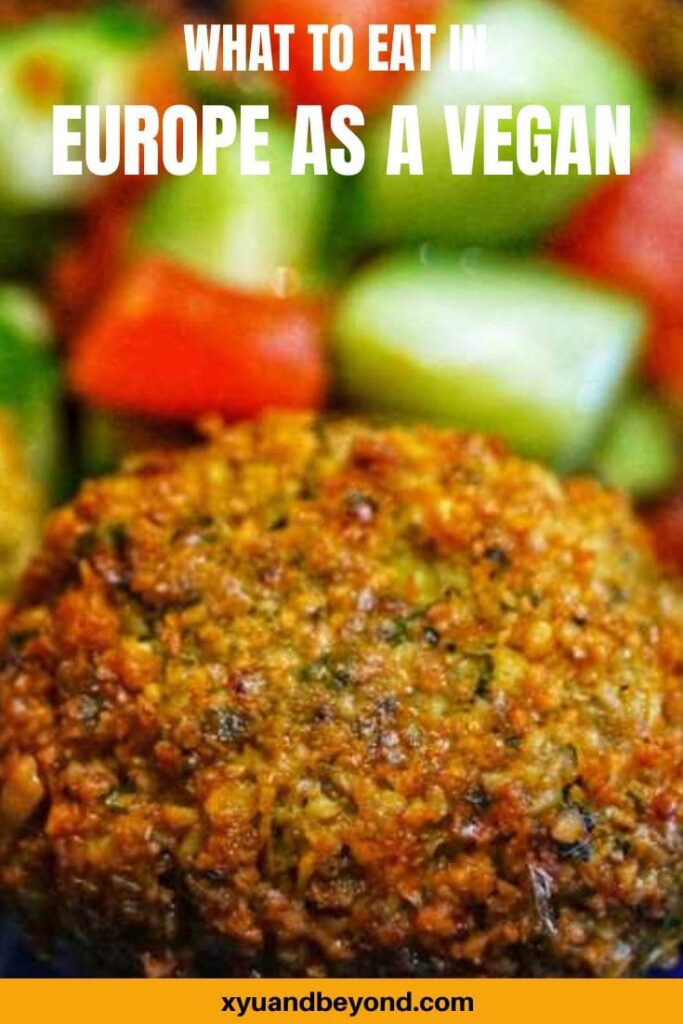
Jase is an avid traveller and creator of Roaming Vegans a vegan travel blog focused on spreading the benefits of ethical travel through tips and destination guides.
